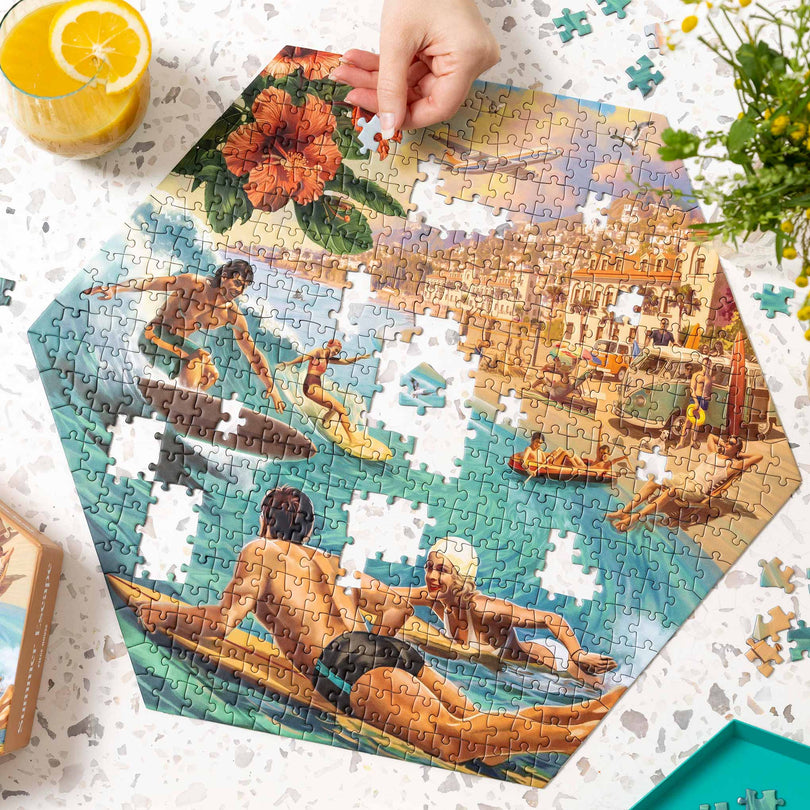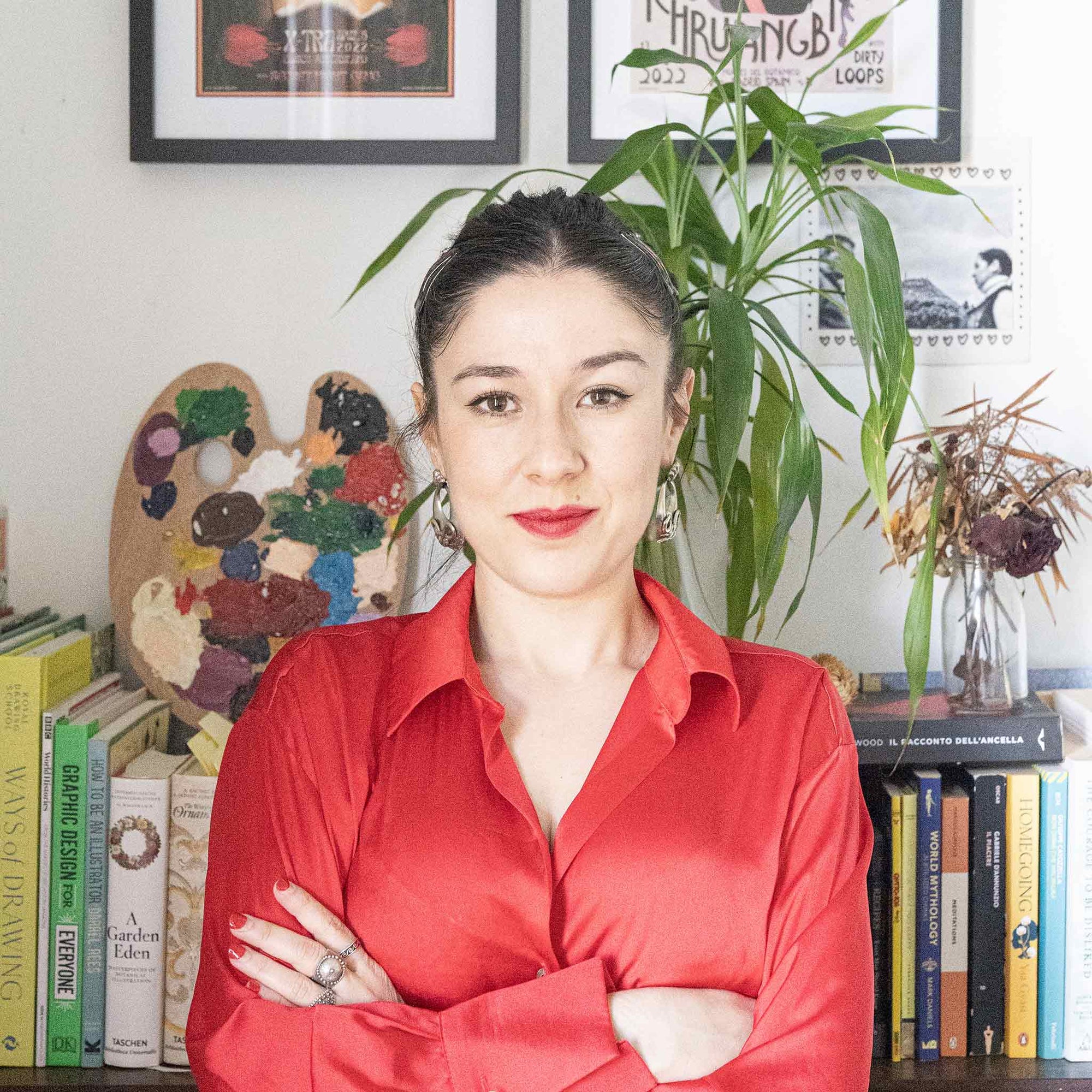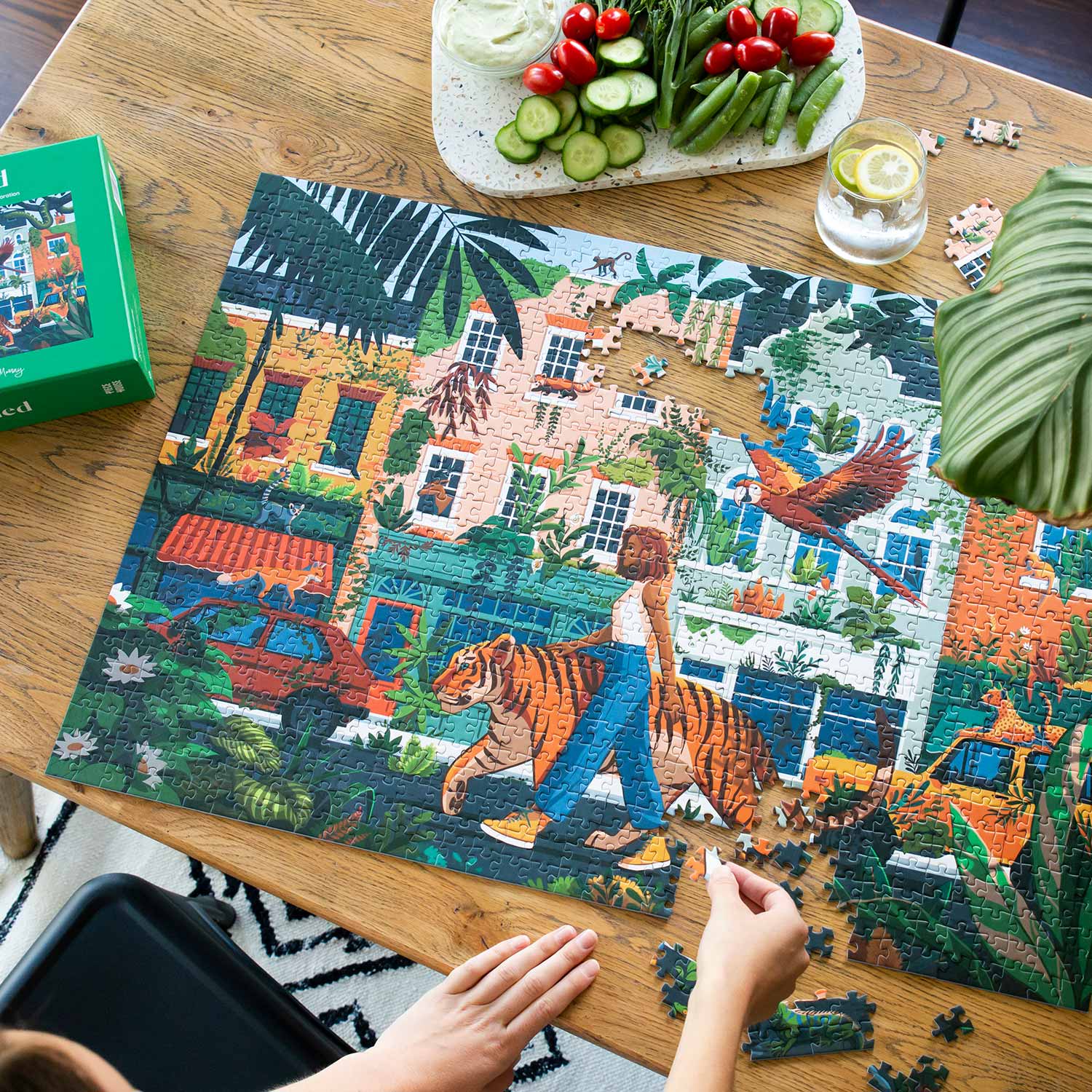Jigsaw puzzles have been a popular pastime for centuries, providing entertainment and intellectual stimulation to people of all ages. The history of jigsaw puzzles dates back to the late 18th century when they were first created as educational tools for children.
In 1760, the first jigsaw puzzle was created by a London mapmaker named John Spilsbury. He mounted a map on a piece of wood and then cut it into small pieces using a jigsaw. The intention of this puzzle was to teach children geography by allowing them to reassemble the map.
It wasn't until the 19th century that jigsaw puzzles became popular as a leisure activity for adults. They were first used as an inexpensive way to produce complex designs, such as intricate tapestries or ornate woodwork. The puzzles were created by cutting a picture or design into small pieces using a jigsaw, hence the name "jigsaw puzzle."
During the 1920s and 1930s, jigsaw puzzles experienced a surge in popularity due to advancements in printing technology. This allowed for more intricate and detailed designs to be printed on the puzzle pieces. During this time, puzzle-making became a popular hobby, and manufacturers began producing jigsaw puzzles in large quantities.
Jigsaw puzzles remained popular throughout the 20th century, with many companies specialising in puzzle-making. In the 1960s, 3D puzzles were introduced, allowing puzzle enthusiasts to create three-dimensional structures using interlocking pieces.
In recent years, jigsaw puzzles have experienced a resurgence in popularity due to their ability to provide a relaxing and meditative pastime. The COVID-19 pandemic in particular saw a surge in puzzle sales as people looked for ways to occupy themselves while stuck at home.
Today, jigsaw puzzles continue to be a beloved pastime for people of all ages. They provide a way to relax, improve cognitive abilities, and engage in a challenging and rewarding activity. From their humble beginnings as an educational tool for children to their current status as a popular leisure activity, the history of jigsaw puzzles is a testament to their enduring appeal.





